
Amy Martel Law Office of Amy Martel San Diego From Courtroom to Courtside Attorney of the Month How to Refocus on CRM and Data Quality in Your Marketing Efforts Chris Fritsch 10 Ways to Develop Employee Strengths Noel Diem Thinking About Hiring a Ghostwriter? Wayne Pollock The Ultimate Guide to Social Media Analytics Guy Alvarez No One Is Reading Your Attorney Bio: 5 Tips to Fix That Julie Ackerman Building Stronger Client Bonds Through Strategic Rate Setting Mark Medice
Volume 240, 2023 $6.95
SAN DIEGO
• $22,659,551 settlement for clients defrauded in a local Ponzi scheme in Levin v. Chicago Title, et al. (2021)(Michael Kirby & Jason Kirby).


• Complete defense jury verdict in real estate dispute and more than $400,000 collected for attorneys’ fees and costs in Batter v. McElhinney, et al. (2019)(Jason Kirby).









• $2.1 million jury verdict for firm client in Doe v. San Diego Unified School District, et al. (2018)(Jason Kirby & Michael Kirby).
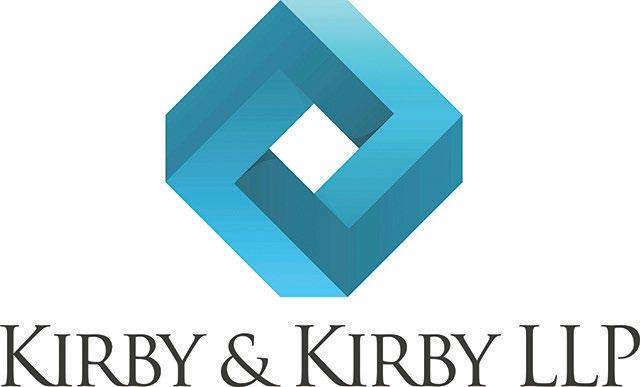
• $1.1 million arbitration award for firm clients on cross-complaint after zeroing plaintiff on $6 million damage claim in Step Strategy Advisors v. Solid Gold Health Products for Pets, Inc., et al. (2018)(Jason Kirby lead counsel).
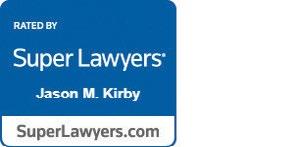



501 West Broadway | Suite 1720 | San Diego, CA 92101 | 619-487-1500 | www.kirbyandkirbylaw.com
SPECIALIZING IN COMPLEX BUSINESS LITIGATION BET-THE-COMPANY CASES OVER 65 YEARS OF COMBINED EXPERIENCE REFERRALS/SUBSTITUTIONS ACCEPTED AT ALL STAGES OF LITIGATION, INCLUDING TRIAL


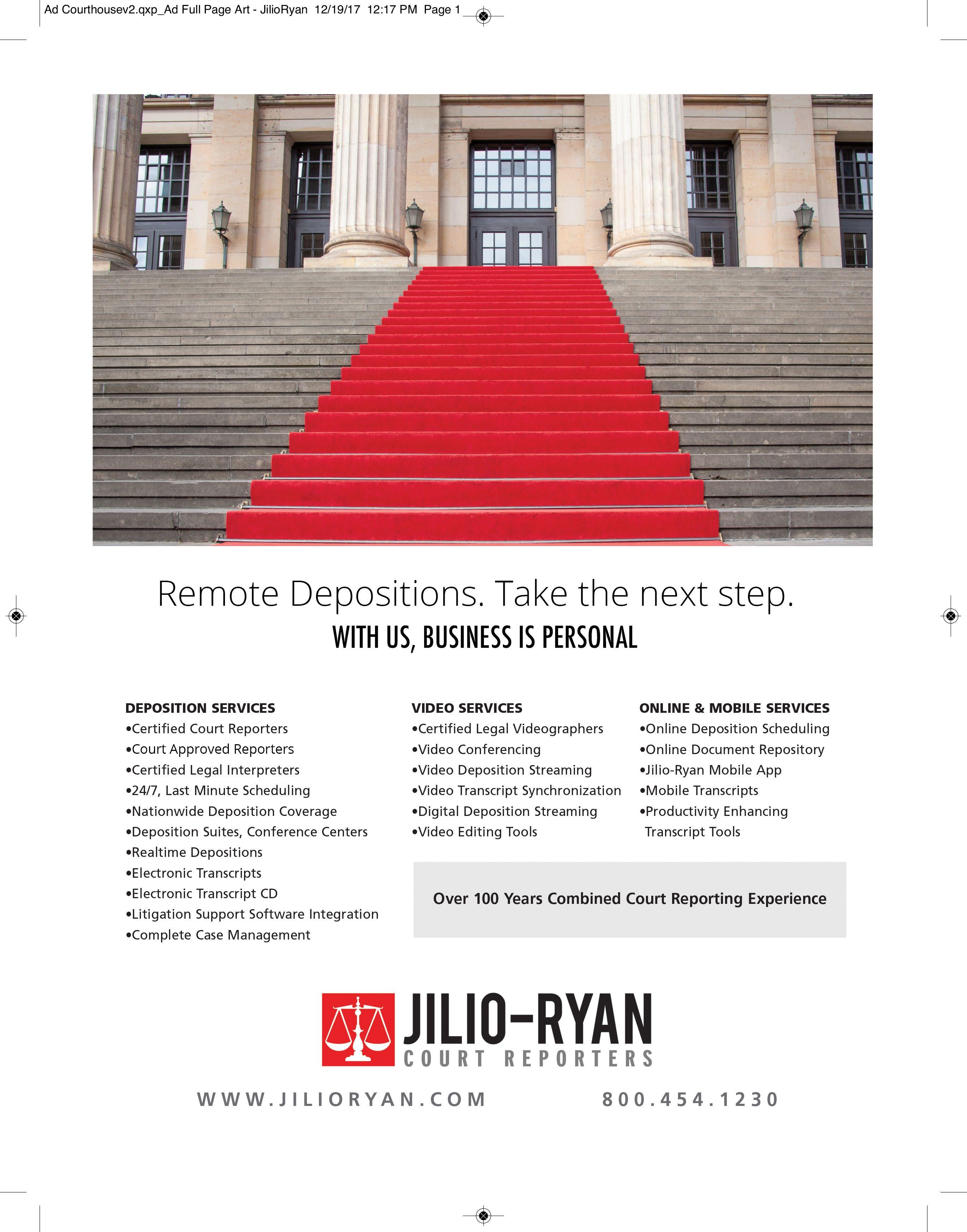




Editorial material appears in Attorney Journals as an informational service for readers. Article contents are the opinions of the authors and not necessarily those of Attorney Journals. Attorney Journals makes every effort to publish credible, responsible advertisements. Inclusion of product advertisements or announcements does not imply endorsement. Attorney Journals is a trademark of Sticky Media. Not affiliated with any other trade publication or association. Copyright 2023 by Sticky Media. All rights reserved. Contents may not be reproduced without written permission from Sticky Media. Printed in the USA EXECUTIVE PUBLISHER Brian Topor EDITOR Wendy Price PUBLICATION DESIGN Penn Creative CIRCULATION Angela Watson PHOTOGRAPHY Chris Griffiths STAFF WRITERS Dan Baldwin Jennifer Hadley CONTRIBUTING EDITORIALISTS Julie Ackerman Guy Alvarez Noel Diem Chris Fritsch Mark Medice Wayne Pollock ADVERTISING INQUIRIES Info@AttorneyJournals.com SUBMIT AN ARTICLE Editorial@AttorneyJournals.com OFFICE 30213 Avenida De Las Banderas Suite 200 Rancho Santa Margarita, CA 92688 www.AttorneyJournals.com ADDRESS CHANGES Address corrections can be made via email or postal mail. TABLE OF CONTENTS 2023 EDITION—NO.240 6 The Ultimate Guide to Social Media Analytics by Guy Alvarez 10 Thinking About Hiring a Ghostwriter? by Wayne Pollock 14 How to Refocus on CRM and Data Quality in Your Marketing Efforts by Chris Fritsch ATTORNEY OF THE MONTH 16 Amy Martel, Law Office of Amy Martel, San Diego From Courtroom to Courtside by Dan Baldwin 22 Building Stronger Client Bonds Through Strategic Rate Setting by Mark Medice 24 No One Is Reading Your Attorney Bio: Five Tips to Fix That by Julie Ackerman 26 Ten Ways to Develop Employee Strengths by Noel Diem 6 24 16
~ C. Michael Alder, Esq., Alder Law, Los Angeles, California, CAALA Past President and Former Trial Lawyer of the Year
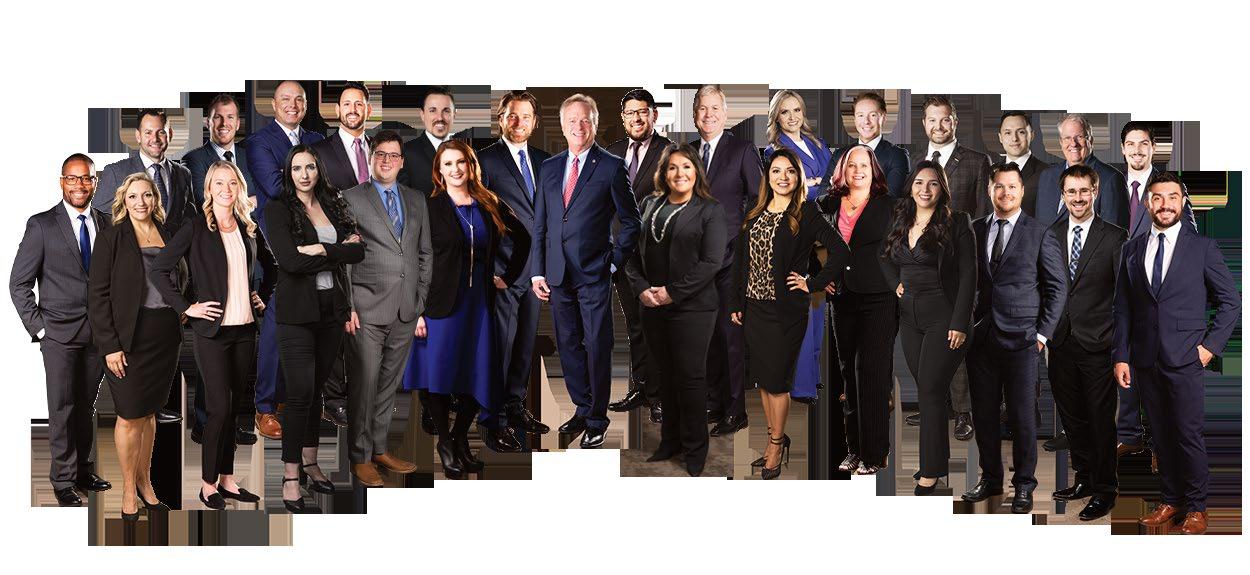











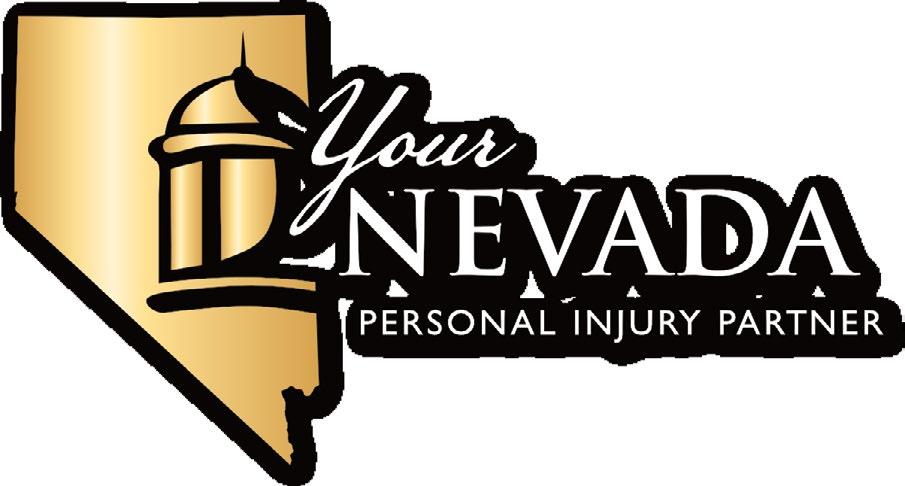

NEVADA REFERRAL & CO-COUNSEL RELATIONSHIPS NEVADA’S LARGEST & HIGHEST RATED INJURY LAW FIRM 801 SOUTH 4TH STREET | LAS VEGAS, NV 89101 6900 SOUTH MCCARRAN BLVD., #1010 | RENO, NV 89509
is one of the best lawyers in the country. I call him every time I have any issue in Nevada and would not hesitate to refer him any type of case of any size.”
“Rick
OVER $1.5 BILLION WON FOR CLIENTS PAST RESULTS DO NOT GUARANTEE FUTURE SUCCESS RichardHarrisLaw.com
There are billions of social media users across the globe— so it would seem just being present on the platforms would be enough to reach new people. However, that’s not the case. Simply existing on social won’t do much for you— you need to focus on the ROI of your strategy. One of the best ways to see how you’re doing and to improve is by using social media analytics. Social media reporting will give you a leg up in producing engaging content that actually has an impact on your bottom line. Here’s what law firms need to know about using social media analytics to improve their digital strategy.
What Are Social Media Analytics?
Social media analytics are the data and reports based on metrics from one or multiple social media accounts. Savvy digital marketers gather and analyze this information to gain insights that are directly tied to their social media and overall marketing efforts. Here are a few of the things that proper social media analytics can help you to do:
• Obtain a more thorough understanding of who your target audience really is and where and how they spend their time.
• Figure out which social platforms are the best for your firm.
• Understand which types of content resonate with your audience, which can be applied to overall digital marketing activities.
• See which topics resonate best with your audience and which social media posts drive engagement.
• Learn more about what is and isn’t working in various campaigns and advertising.
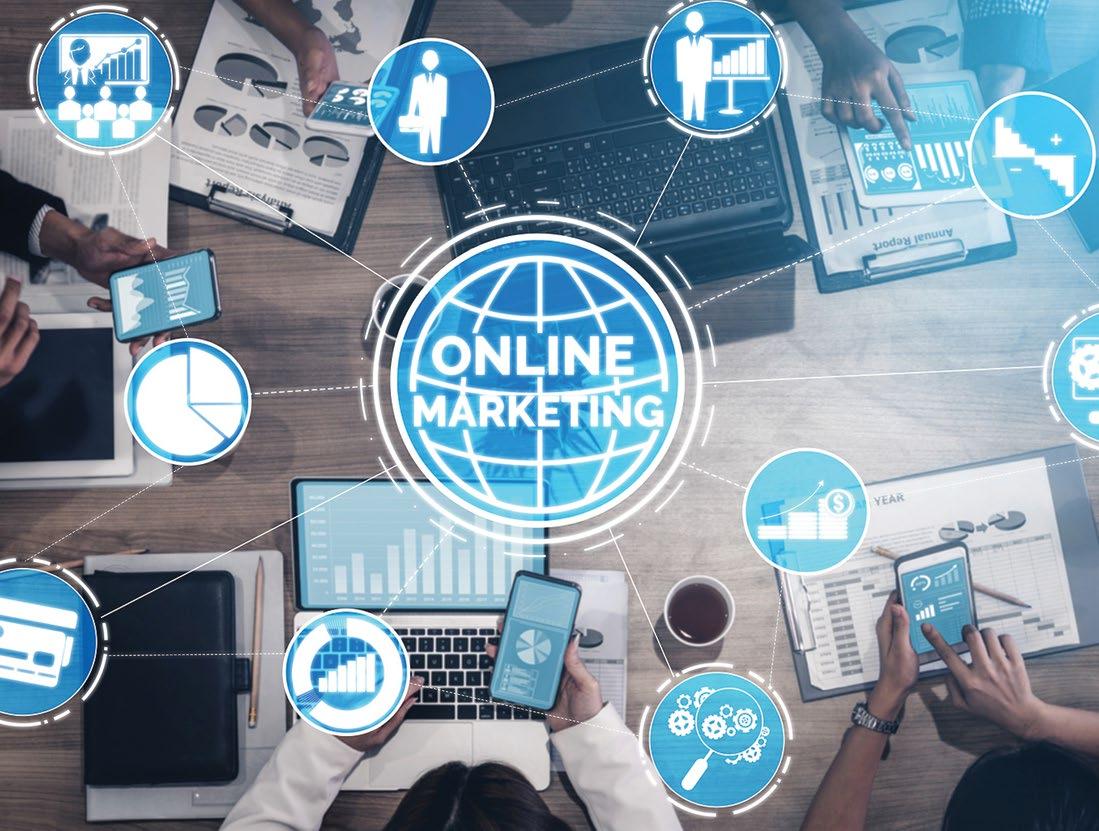
• Create a more robust strategy that is better aligned to the goals that are important to you.
Types of Social Media Analytics Reports
As you can see, obtaining and studying this information has implications far beyond simply seeing which posts are most popular. However, which information should you be looking at? Here are some of the reports that we suggest generating monthly.
1. Audience Analytics Report With this report, you can see the current number of followers for each social
The Ultimate Guide to Social Media Analytics
by Guy Alvarez
platform. You can also compare to a previous period so you can visualize trends over time.
2. Published Posts Analytics Report This is simply the number of social posts published across your social accounts during a specific period.
3. Interactions Analytics Report Here you can find the number of likes, reactions, and comments on your posts across multiple platforms. This is important for understanding engagement, especially over time.
4. Click-through Analytics Report This number refers to how many clicks you get on any social posts published through HubSpot. Note that this is a specific HubSpot report, but you can find similar reporting in other analytics platforms. This data is helpful in understanding whether or not your content is driving action.
5. Share Analytics Report Look at the number of posts your audience has shared if you want to gain an idea of how valuable they find your content.
6. Impressions Analytics Report Here you can see the number of views that posts on your LinkedIn, Facebook, and Instagram pages received.
7. Sessions Analytics Report With this report you can see how many web sessions on your site took place within a given period driven by social media. This is really valuable in understanding how social actually drives web activity and potentially leads.
8. New Contacts Analytics Report Another HubSpotspecific report, you can view this data to see how many new contacts have been created in HubSpot due to web sessions driven by social media within the selected period.
The Best Social Media Analytics Tools
Just where does one find all of that handy reporting? There are a variety of platforms available to help dig deeper into your social media activity. The truth is that finding the right tools can actually feel overwhelming because there are so many. We’ve narrowed the list down to our favorites here.
Attorney Journals San Diego | Volume 240, 2023 6
1. HubSpot Social Media Software This platform aims to give insight into the customer journey through integrated analytics tools. They help you to better understand your overall marketing journey and how social media impacts the bottom line. Users also love the resources available, such as social media analytics report templates, free social media analytics tools, and social media courses.
2. TweetDeck As the name implies, this tool is Twitterspecific. It works in real-time to support marketers in viewing and analyzing Twitter engagement, management, and tracking. If you are a frequent user of Twitter, this tool is worth a look.
3. Buffer The goal of this tool is to dig deeper into how you can grow your brand on social media. The software measures your performance on various social platforms, creating detailed reports about the data that matters to you, and offering ways to improve your reach, engagement, and more.
4. Hootsuite This popular tool allows users to create customized social media reports using over 200 metrics across social channels and campaigns. Users love that the reports are shareable and support keeping your entire team on the same page.
5. Sprout Social With this tool, you can take a closer look at your potential clients’ needs through the conversations your audience is having on social media. You can also use it to measure your specific content and campaign efforts across various platforms and channels to determine what’s working best among audience members and what needs some work.
6. Mention Another social listening tool, this platform allows your firm to monitor, listen, and analyze your posts and interactions with (and among) audience members via different social media channels.
An Effective Social Media Analytics Strategy
If these sorts of analytics have never really been part of your reporting, you might not be sure where to start. Follow this simple 5-step plan to start making the most of the social media analytics at your disposal.
1. Create SMART Social Media Goals SMART stands for Specific, Measurable, Attainable, Relevant, and Timely. Here’s a cool template that can help you to create these SMART goals and work toward them. Start by thinking through what you really hope to learn from social media analytics, and how you will use the information.
2. Choose Which Metrics to Track You can’t track every metric, and once you set your SMART goals, it won’t make sense to. The metrics you want will vary based on which platforms you use and what you hope to accomplish, but some examples of commonly
tracked metrics are reach, engagement, mentions, social ROI, social listening, and shares.
3. Pick the Right Social Media Analytics Tools Narrow down which tools you will invest in for these purposes. We’ve covered a few of our favorites, but by all means do your research and see which options align best with the way that your team works. Some important things to consider are whether or not you need the tool to track across multiple channels and platforms, and of course what your budget is. These two things are the main drivers for most digital marketers’ decisions on tools. Also take a close look at the goals you set, the metrics that align to them, and which tool makes it easiest to obtain that information.
4. Start Measuring After you implement your social media analytics software, you can begin to measure the success of your efforts. Start pulling the metrics you care about, and depending on which tool you choose, you can create customized reports and dashboards or pull the specific details about data points you care most about. Additionally, on a quarterly basis, you may want to take a look at your overall goals and see whether the tool is helping you to meet them.
5. Make Necessary Adjustments A crucial part of monitoring social media analytics is using the information that you obtain. Without this step, you’re wasting your time and investment. Take a look at how reporting has been going and whether or not you’re getting the full picture that you need. Do you have the metrics necessary to understand your performance compared to your goals? If not, adjustments need to be made and you may even need to try a different tool at some point.
It’s worth noting that many marketers mix up steps 2 and 3, choosing tools before deciding which metrics need to be tracked. We strongly suggest making a list of goals and associated metrics, so that you have a robust list of requirements when shopping for an analytics tool. Only by having that information ready can you make an informed decision about which analytics platform is best for your firm over the long term.
Takeaway: There are many ways that tracking and acting on your social media analytics can help you to grow and reach your audience. By paying close attention to key metrics, you’re likely to end up seeing improvements in things that are tied to your ROI, like engagement, client loyalty, and more. Choose the right analytics tool to make sure your analytics really give you valuable insights based on your particular needs. n
Guy Alvarez is the founder and Chief Engagement Officer. Guy is intimately familiar with all aspects of the professional service firm. First, he worked as a law firm associate. Later, he joined ALM Media where he built websites for some of the largest US law firms. After ALM, Guy honed his skills while running KPMG’s Global Digital Marketing group. Learn more at www.good2bsocial.com.

Attorney Journals San Diego | Volume 240, 2023 7
To schedule, contact Haward Cho: (213) 683-1600 and (619) 233-1323 or haward@adrservices.com

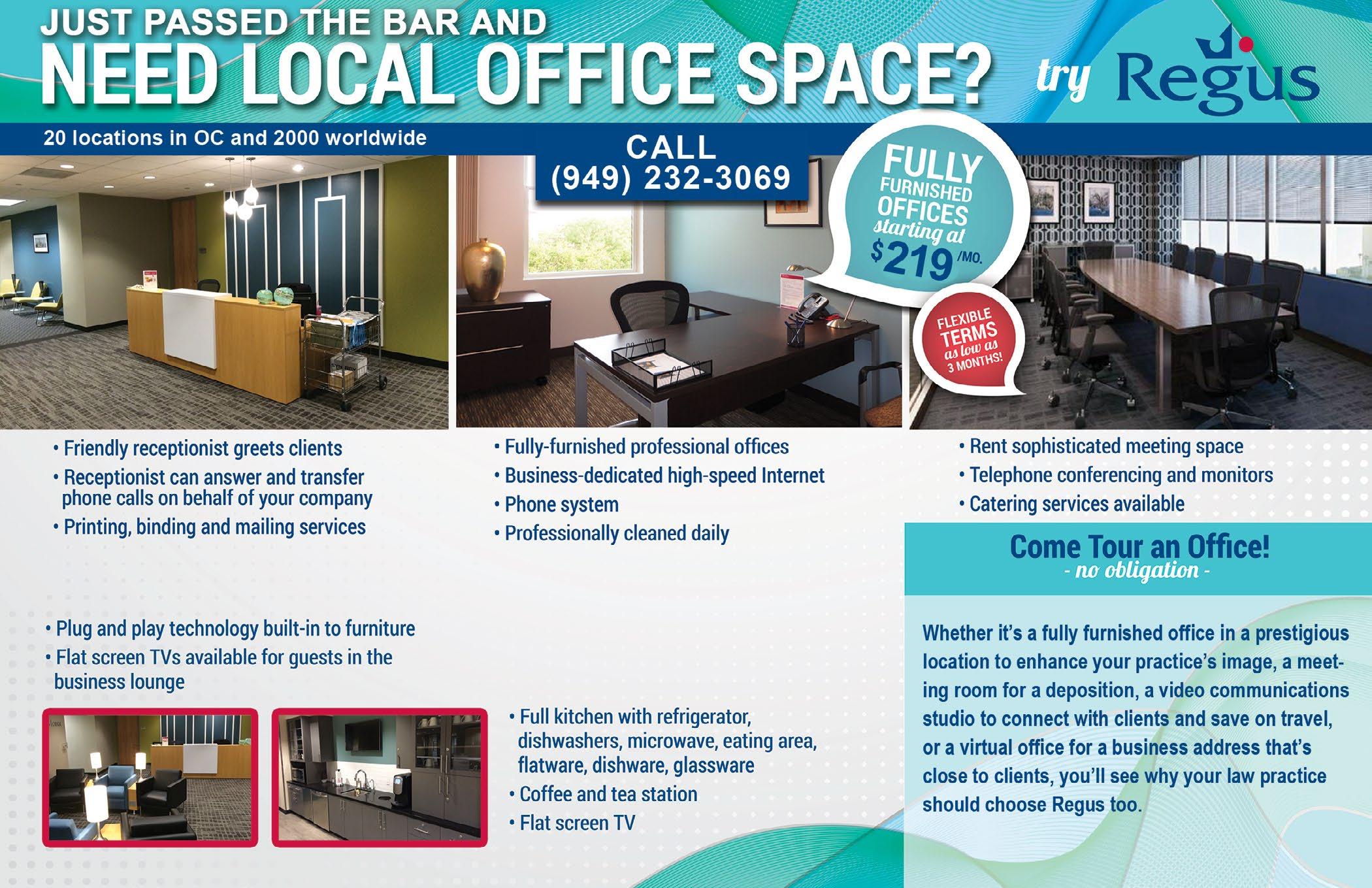
Short summaries (one-paragraph), organized by legal topic, of every new published CA civil case, helping CA attorneys save time, win more, and make more money. Monthly, quarterly, annual, and annual practice area publications are available. Subscribe at www.cacasesummaries.com
 Monty A. McIntyre, Esq. Mediator, Arbitrator & Referee ADR Services, Inc.
Monty A. McIntyre, Esq. Mediator, Arbitrator & Referee ADR Services, Inc.
8 Attorney Journals San Diego | Volume 240, 2023

The best ghostwriters don’t just write. They work with their clients to frame their ideas in ways that produce content that is relevant, valuable, and compelling to their target audiences.
If you are thinking about hiring a thought leadership ghostwriter, as you vet potential candidates, make sure the one you choose lets you know they will also serve as a “ghost thinker.”
What most people don’t realize when they work with ghostwriters is that the act of writing is only part of the value a ghostwriter provides. A ghostwriter should also be helping their clients frame their thoughts about a subject and structure them in an article or other piece of content.
The Importance of Ghost Thinking When Ghostwriting
The best ghostwriters don’t just write what their clients tell them to write.
Instead, the best ghostwriters work with a client to frame an idea the client has in a way that will resonate with the client’s target audiences, and then create a structure for a written piece of content containing the client’s idea that ensures it is relevant, valuable, and compelling to those audiences. This is especially true when we’re talking about ghostwriting thought leadership content for attorneys.
Many pieces of thought leadership content in the legal field will focus on developments in the law, such as court decisions, new legislation, and regulatory actions. This kind of content is straightforward. The ghostwriter will review the language of the court decision, legislation, or regulatory action, write an accurate summary of it, and then weave in the client’s views about the “now what” or “so what” of the development.
But sometimes an attorney will want to work with a ghostwriter regarding an “evergreen” topic (i.e., one that’s not tied to a recent legal development) that the attorney has not fully thought through. Perhaps the attorney wants to write about taking depositions of expert witnesses, or a deal they worked on that required an innovative approach, or the emergence of two approaches to litigating a particular kind of case. They’re just not sure about the angle from which they’ll approach the topic. When this is the case, the best ghostwriters serve as ghost thinkers.
Thinking About Hiring a Ghostwriter? Make Sure They’ll Also Be a Ghost Thinker
 by Wayne Pollock
by Wayne Pollock
They work with the attorney to develop the structure of the thought leadership article by asking questions about the topic, the attorney’s views on the topic, and the attorney’s experience regarding the topic.
If done correctly, the ghostwriter has pulled from the attorney the substance they’ll need for writing the article, in a structure—developed in real time—that the ghostwriter has determined would make the content as relevant, valuable, and compelling as possible.
Ghost Thinking in Action
For example, an article about depositions of expert witnesses could take many forms. The most basic one would be “Five best practices for deposing expert witnesses.” The topic might be of interest to an attorney’s target audiences, but this particular framing is one that has been used time and time again. For that reason, those target audiences might not be interested in this article.
But if the ghostwriter pushes the attorney toward more interesting angles, such as common misconceptions about deposing experts, or a discussion of the four-pronged strategy the attorney used to elicit deposition testimony from an expert that changed the direction of a litigation, the ghostwriter has given a fresh angle to a well-worn topic.
The same thing goes for an article discussing the emergence of two approaches to litigating a particular kind of case. The mere fact that there are two approaches may not be particularly compelling to an attorney’s target audiences, especially if these two approaches have been employed for a while now.
But if the ghostwriter asks the attorney questions that elicit insights that push the article in a more compelling direction, such as comparing and contrasting the two methods or discussing recent trends in these two methods, the attorney and the ghostwriter will now have an article about this topic that’s more interesting to the target audience.
Ghost Thinking Is Simple, but Not Easy
Ghost thinking is a skill that looks easy but is not. The best analogy I can make is what many characters in the LEGO Movie and LEGO Movie 2 do when they build objects with LEGOs.
Attorney Journals San Diego | Volume 240, 2023 10
If you didn’t see the movies, when the characters build objects from LEGOs, the pieces come together on the fly. A vehicle may still be coming together, with LEGO pieces flying in from all directions to assemble it, as a character jumps on it and begins to drive it.
That’s what ghostwriters who are ghost thinkers do. As they are chatting with their client, they start to see an outline develop in their minds for the piece of content being discussed.
Once that outline comes into focus, the ghostwriter can steer the conversation in a way that helps them elicit from the client the substance they need to write the article with, based on the angle that they’ve determined would be most relevant, valuable, and compelling given what they know about the client’s target audiences and the client’s goal for this particular piece of content.
When a ghostwriter can be a ghost thinker and guide their client toward the optimal substance and structure for a piece of content during a conversation, the ghostwriter also ensures they’re using their client’s time most efficiently.

They should only need one conversation with their client because they should be asking the right questions to elicit the right information for the content since they’re mapping out the content’s substance in real time during the conversation. They’re seeing in their minds the outline of the content before it is written, so they know what questions to ask of their client and what points to follow up on.
When You’re in the Market for a Ghostwriter, You’re in the Market for a Ghost Thinker, Too
If you’re interested in hiring a thought leadership ghostwriter, you’ll want to make sure they’ll serve as a ghost thinker too.
If they will, you and your colleagues will get a better bang for your buck because your ghostwriter will produce more relevant, valuable, and compelling content and require less time from you and your colleagues.
To be sure a ghostwriter you’re vetting will serve as a ghost thinker, ask them questions about their process. Their description of it should make it clear they are a ghost thinker.
If they’re not going to serve as a ghost thinker, they’re not going to push you and your colleagues to think about how to discuss the topics you want to discuss in your thought leadership in a way that will resonate most strongly with your target audience.
If you’re confident that you and your colleagues can do that on your own, that’s fine. But chances are that you and they could use a little help getting there.

That help is exactly the kind of help a ghostwriter who is also a ghost thinker provides. n
is
The Law Firm Editorial Service sets free the knowledge and wisdom trapped inside Big Law and boutique law firm partners by collaborating with them to strategize and ethically ghostwrite book-of-business-building marketing and business development content. Learn more at: www. lawfirmeditorialservice.com.
Are You a Business Owner OR Attorney With a Client Who is Dealing With an ADA Violations Lawsuit? Don’t Panic! (ACT) Now! NATIONWIDE ADA COMPLIANCE SOLUTIONS We have the answers and solutions to all of your ADA compliance issues for your business and/or client. 2041 Riviera Drive Vista, CA 92084 (760) 940-6106 adacomplianceteam.com ADA Compliance Team, Inc. (ACT) COMPLIANCE SURVEYS / ACCESSIBILITY SOLUTIONS / TRANSITION PLANS Attorney Journals San Diego | Volume 240, 2023 11
Wayne Pollock
the founder of the Law Firm Editorial Service.


Carlsbad Office 2175 Salk Avenue, Suite 180 Carlsbad, CA 92008 Top Client Reviews Average 5-Stars on: 619-INJURED www.hhjtrialattorneys.com @hhjtrialattorneys La Jolla Office 6435 Caminito Blythefield, Suite D La Jolla, CA 92037 REFERRING ATTORNEYS WILL RECEIVE REFERRAL FEES!




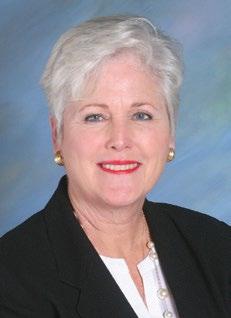





Local Solutions. Global Reach. 13 Attorney Journals San Diego | Volume 240, 2023 In a world full of mergers and monopolies, count on us to keep it real. When it comes to court reporting, video and litigation services, Peterson delivers real reporters, real experience, and real service. Day by day, year by year, case by case, we’ve been setting the high bar for integrity, technology and reach for over 35 years. Independently owned and operated 100% Woman-owned Business WBE Certified Serving CA and the US since 1986 Nationwide Reporting | petersonreporting.com | 800-649-6353 Peterson Reporting 2023 Atty Journal HPH.indd 1 4/25/23 4:45 PM
Customer Relationship Management (CRM) systems have proven to be pivotal tools for numerous industries, and the legal sector is no exception. As law firms ramp up their marketing initiatives this October, it’s crucial to understand how a robust CRM system, bolstered by high-quality data, can elevate their marketing efforts.
Importance of CRM in Legal Marketing

1. Streamlined Client Interactions: A comprehensive CRM system captures every interaction, such as calls, emails or meetings, ensuring lawyers and their teams remain informed and can tailor their approach to individual client needs.
2. Targeted Marketing Campaigns: By leveraging client and prospect data from CRM, law firms can create segmented marketing campaigns. For instance, a campaign targeted at clients seeking real estate legal advice in the fall can be distinctly different from one aimed at businesses looking for corporate legal services.
3. Referral Tracking: Many lawyers acquire new clients through referrals. With a CRM, it’s easier to track which referrals come from where, enabling firms to focus their marketing efforts and appreciation on their most valuable networks.
Data Quality: The Bedrock of Effective CRM
For a CRM system to be effective, the quality of the data fed into it is paramount. Here’s why data quality is critical:
1. Accuracy and Relevance: Ensuring that client data is accurate is vital. Incorrect contact details can lead to missed opportunities, while outdated information can render marketing campaigns ineffective.
How to Refocus on CRM and Data Quality in Your Marketing Efforts This Fall
by Chris Fritsch
2. Enhanced Decision Making: Quality data enables law firms to glean actionable insights, from understanding which services are most sought after, to identifying the most influential referral sources.
3. Personalization: In the age of digital marketing, personalization is key. Accurate and up-to-date data ensures that marketing campaigns resonate with their intended audiences. For instance, recognizing that a client has recently started a family business can lead to tailored communications about legalities related to family enterprises.
Integrating CRM and Data Quality into October Strategies
Incorporating CRM insights can refine each of the October marketing strategies mentioned above by:
• October Starter Webinar or Workshop: Use CRM data to identify topics that have been frequently discussed or queried by clients over the past months. This way, you can create content that directly addresses the pressing needs and concerns of your clients. Consider sending out pre-webinar surveys, leveraging CRM to select potential attendees and tailoring your content accordingly. By aligning your webinar or workshop topics with real-time data, you not only ensure relevancy but also boost engagement rates.
• Participate in Local October Festivities: Identify and reach out to potential clients or networks using CRM segmentation. By understanding the demographics, interests and preferences stored in your CRM, you can choose festivities that will best resonate with your target audience. Ensure your presence at these events is optimized for the clients you aim to serve.
• October Synopsis Newsletter: Include an item addressing common questions or issues stored in the CRM. This is a great way to demonstrate that you’re actively listening to your clients. Personalize the newsletter based on the
Attorney Journals San Diego | Volume 240, 2023 14
data segments. For instance, for corporate clients, provide insights into upcoming legal changes that could impact their businesses. This proactive approach, fueled by CRM insights, establishes you as a thought leader in your domain.


• Strategize Ahead: Use CRM analytics to predict future client needs and craft early bird offers accordingly. By analyzing historical data and trends from previous years, you can anticipate client requirements in the coming months. Perhaps there’s a seasonal surge in certain legal queries around winter. Offer discounted packages or consultations related to those specific services. This preemptive approach positions your firm as both insightful and client centric.
• Revitalize Your Digital Footprint: Embed CRM feedback or client testimonials to make your website and social media more authentic and relatable. Positive feedback and testimonials can serve as powerful trust signals for potential clients. If, for instance, a client praised your swift response time or detailed consultation in the CRM feedback, highlight such commendations on your homepage or in your social media campaigns. By incorporating real client experiences, you humanize your brand and reinforce your credibility.
• Forge Ties with Autumn-centric Businesses: Use CRM to identify businesses that are active during the fall and approach them for collaborations. By understanding which businesses peak during the autumnal months through CRM analytics, you can offer specialized legal packages or workshops tailored for them.
By deepening the integration of CRM insights into these strategies, legal professionals can craft more intuitive, targeted and successful marketing initiatives for the seasonal shift. With a focus on data quality, law firms can ensure that their marketing strategies are not only timely but also personalized, efficient and effective. n

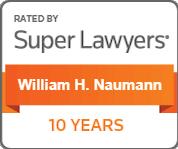

As a CRM Success and Business Development Technology Consultant, Chris Fritsch works together with leading professional services firms across the country to help them select and implement the right Client Relationship Management and eMarketing solutions to support their marketing and business development efforts and maximize value and return on investment. Learn more at www.clientsfirstconsulting.com.

Attorney Journals San Diego | Volume 240, 2023 15
From Courtroom to Courtside: Amy Martel’s Balance of Law and Parenthood
by Dan Baldwin
When she was named 2022 Trial Lawyer of the Year by Consumer Attorneys of San Diego, Amy Martel, Esq. said, “The practice of law has changed, and this award is an acknowledgment to women litigators that we can get the big verdicts and still go to our kids’ sports games. In September I finished a 3-week medical malpractice trial and the next day we packed the van and headed out for a weekend basketball tournament for my boys. It takes effort to mentally make a quick transition from cross examiner to “sports mom” but I feel incredibly lucky that I have the chance to be both. I think this was a significant achievement not only for me, but for the next generation of women trial lawyers, many of whom had never seen a woman accept this award,” says Amy Martel, Founder of The Law Office of Amy Martel.
In its more than 50 years, the organization has given the award to only seven women.
“To be one of the first of my generation of women to get that award was incredible. I have a ton of respect for the women that paved the way for me to be able to get there,” she says.
Entering a New Playing Field
Her award was based on an entire year’s worth of litigation and service but was significantly influenced by a specific case that proves Martel’s contention about the increasing power of women litigators. She
won a $3,929,198 jury verdict in the wrongful death case of Skaggs v. Frederick Howden, M.D.
Cardiothoracic surgeon, Defendant Dr. Frederick Howden provided negligent care and treatment to Shane Skaggs following an aortic valve replacement surgery. In the immediate post operative period Skaggs showed signs of serious and ominous complications. He was hypoxic, acidotic, he was in cardiogenic shock and his EKG showed signs of myocardial infarct. Howden recognized Skaggs’ recovery was compromised yet, he wrote it all off as “typical post operative and expected findings” and failed to investigate the cause of his patient’s decline. Skaggs died seven hours after surgery.
Martel says, “Unfortunately, he had two young kids and a wife who not only suffered from the physical loss, but from the trauma of how Skaggs had died. I tried that case and was able to get a significant verdict, the jury actually gave me more in general damages than I requested—almost double of what I asked for.”
Earlier this year Martel obtained a $5,650,000 settlement in a medical negligence case in which the defendant failed to identify and properly evaluate a thymic mass that was identified on CT scan. For two years the patient had multiple pulmonary symptoms and despite the thymic mass having been identified on CT, her physicians failed to biopsy the mass. The delay in treatment of the mass, which was ultimately determined to be malignant, caused encephalopathy (a brain disease) that resulted in the patient losing 85 percent of her short-term memory.
Attorney Journals San Diego | Volume 240, 2023 16


MONTH
JOURNALS
ATTORNEY OF THE
2023
Amy Martel, Esq.
This year she has also had two significant prelitigation settlements, which is fairly unusual for medical malpractice. One was for $2M for the failure to diagnose lung cancer and one was for $900,000 for failure to diagnose breast cancer.

Martel praises the women attorneys who paved the way for her and her contemporaries, noting that the playing field has definitely changed for the better. “We have a new ‘playing field.’ Times have changed and attorneys, firms, and clients now understand that women can handle the biggest and most complex cases and go on to win the big verdicts. We can now make the practice of law our own and no longer have to fit into the old school mold of how to practice law.”
Taking Care of Business, Taking Care of the Kids
Practice areas of The Law Office of Amy Martel include personal injury, medical malpractice, birth injury, wrongful death, failure to diagnose, motor vehicle accident, slip and fall, premise, and product. Approximately 75% of her cases are medical malpractice with most of the remaining 25% devoted to general personal injury and related cases.
Clients speak well of the new firm and its founder.
“Amy stood by us through five long years of setbacks. The ‘Coronavirus’ closed the courts, so we suffered delays, but Amy was always there. When we finally got to go to mediation, Amy took charge and fought for us. This was a difficult time in our lives, but Amy was always the shining light.” —Dennis
Long
Martel decided to step out and form her own firm after 15 years with Chihak and Martel. Two key factors influenced the decision. One, it was time, she says. “I was ready to stand on my own two feet, to call my own shots, and to take whatever risk and reward scenarios came along. Another reason was that I had reached the point in my life with my kids’ ages that I wanted to be more present at home. I don’t believe that a successful career and a successful home life are incompatible. It’s not a ‘one or the other’ situation.”
She has a physical office for when one is needed, but primarily Martel and her team now work remotely, which has proven even more effective than she originally believed possible. “Without having to deal with the usual distractions of an office environment, I find I’m very efficient and am able to get a lot done in a shorter period of time. I’m really enjoying it. I hired my assistant with the intention of working remotely and she likes it as well. Working remotely allows us to have more flexibility in our schedule, which translates into more time for our clients.”
Times have changed and attorneys, firms, and clients now understand that women can handle the biggest and most complex cases and go on to win the big verdicts.”
Attorney Journals San Diego | Volume 240, 2023 18
—Amy Martel, Esq.
Early on she didn’t think she would like working from home, figuring the distractions of a home environment would be just as challenging as those of an office. She says she probably works more hours for her clients than before, but at the same time now has far more time for her family. She and her husband have two boys in junior high and having the ability to check in with them, even just for a few minutes a day, makes a huge difference, she says. “For example, one day this summer my boys were going to the beach midday, and I joined them for two hours, came back home, and went back to work. It was amazing and I never would have been able to do that if I were not running my own business. I have taken the same approach with my staff—as long as the work is getting done, I don’t need them to be tied to their desk. I think allowing this flexibility has created a very positive work environment with a surprising amount of efficiency.”
Martel credits her success in great part to work ethic, her experience and ability to understand the issues, and just being able to spot the issues. She is also aggressive in defending her clients and her positions. “If you’re going to try and take advantage of me, you’ve probably barked up the wrong tree,” she says. She also works hard at building and maintaining good relationships with the defense counsel and others in the profession and related fields.
“I think that those relationships have allowed me to obtain good results for my clients because people know they can trust me. They know I’m going to be prepared.
They know I’m going to be civil, but at the same time a tough litigator,” she says.
Her clients readily agree with her approach to the practice of law and to the care of her clients.
“Amy Martel is exceptional. She handled every aspect of our case so we could focus on the care of our loved one, not on the issues surrounding the case. We felt, heard, and trusted her implicitly. Her team was on call to answer questions and explained all processes efficiently. Even when we hit a roadblock, Amy went after it with great tenacity. We are forever grateful to her and her team as they exceeded our expectations.” —Jenifer Met
Working Remote Means Better Service to Family and Community
In addition to providing more productive time for client service, working remotely has allowed Martel more time and opportunity for professional, community and family service and obligations. Community service has always played an important role in her life.
She was named to San Diego’s Business Journal’s Best of the Bar, and as a Super Lawyer from 2015 to the present. In 2018 she received an Outstanding Trial Lawyer award from Consumer Attorneys of San Diego for her work in Katie Hunt v. Steven Drosman, M.D. and in 2019 she received Outstanding Advocate award from Consumer Attorneys of San Diego for her work in Graves v. Kaiser Foundation , et al.
Martel is on the Board of Directors of Consumer Attorneys of California and the San Diego Inn of Court. She is a Master in the Wallace Inn of Court and co-chair of the education committee. She served on the Board of Directors for Consumer Attorneys of San Diego from 2014-2021, she served as Secretary, Treasurer, President Elect and in 2020 she served as President. She also served on the Board of Directors of Traveler’s Aid Society from 2003-2018, a private, non-profit agency that provides crisis and short-term assistance for food, shelter, and transportation as well as advice and resources for San Diegans in need. She served as Chair of the Board from 2007-2009.

Attorney Journals San Diego | Volume 240, 2023 19
Jason, Amy, Waylon and Charlie (in front) Martel. Amy accepting the “Trial Lawyer of the Year Award.”
In 2020, Martel served as co-founder and Chair of Resolve Law San Diego, the largest pro bono project in San Diego’s history. Resolve Law San Diego was formed to create a temporary solution to the crisis the civil justice system faced as a result of the Court’s closure due to COVID-19. The goal of the program was to provide free mediation and dispute resolution services to the San Diego legal community. RLSD recruited more than 250 volunteer mediators and resolved more than one hundred cases in less than two hundred days. RLSD was the first program of its kind in the nation and the committee helped numerous other jurisdictions launch similar programs, including Resolve Law Los Angeles.

Martel has been a distance runner and a bike rider since her university days. Along with their two boys, the Martel family is often traveling in their van across the west coast with their mountain bikes or to basketball tournaments. Being active in the day-to-day activities and sports of her two sons, Waylon and Charlie, is her priority. “People always tell you about the terrible twos, but no one warns you about tweens,” Martel says with a laugh. “Now, more than ever, you can be a litigator and have a great quality of life outside of work. I think the best advice that I could give women who want to become attorneys is to realize that there is nothing that will make up for a hard work ethic. Good ethics are essential. But also, after my experience of going out on my own, it’s important to think out of the box. Be confident that you can do things the way you want to and run a business the way you want to, and that you don’t have to fit the mold of the old guard anymore. There is a lot more opportunity out there for young women who want to have a family and want to be litigators. And you can excel at both.” n
Contact
Amy Martel
Law Office of Amy Martel
2262 Carmel Valley Road, Suite G Del Mar, CA 92014
(619) 374-0074
www.amymartellaw.com
EXPERIENCE
» EDUCATION
• University of San Diego School of Law, 2003
• Honors: Chair, The Pro Bono Legal Society
• Honors: Member, Mock Trial Team
• University of Washington, 1999, BA Political Science and History
• Honors: Member, The Cross Country, and Track Team
» HONORS AND AWARDS
• Awarded 2022 Trial Lawyer of the Year by Consumer Attorneys of San Diego
• Named one of San Diego’s Top Attorneys by Super Lawyer Magazine, 2015-present
• Named top 25 Women Attorneys in San Diego 2018, 2021-present
• San Diego Business Journal’s Best of the Bar, 2015-present
• Awarded Outstanding Advocate by Consumer Attorneys of San Diego 2019
• Awarded Outstanding Trial Lawyer by Consumer Attorneys of San Diego 2018
» PROFESSIONAL ASSOCIATIONS AND MEMBERSHIPS
• California State Bar, Member
• Consumer Attorneys of San Diego, Member
• Consumer Attorneys of San Diego, Board of Directors, 2014-Present, Secretary 2017, Treasurer 2018, President Elect 2019; President 2020, Immediate Past President 2021
• Consumer Attorneys of California, Member, Board of Directors 2020-present
• San Diego County Bar Association, Member
• Nevada State Bar Association, Member
• American Inns of Court, J. Clifford Wallace, Master
• San Diego Inn of Court, Board of Directors
• Traveler’s Aid Society, Board of Directors, 2003-2018
» BAR ADMISSIONS
• California
• Nevada
Attorney Journals San Diego | Volume 240, 2023 20











Divorce & Family Law Attorneys Friendly Law Office with Big Firm Results Practice Areas Divorce Mediation Family Law Prenuptial Agreements Child Custody & Visitation Paternity & Parental Action Domestic Violence & Restraining Orders As of 8/22/2023 La Mesa Office 7777 Alvarado Road Suite 201 La Mesa, CA 91942 San Diego Office 8880 Rio San Diego Drive 8th Floor San Diego, CA 92108 619-826-6926 www.pragerjones.com 5 Star Reviews on:
Following up on my recent piece about navigating the complex landscape of 2024 law firm rate setting, I’d like to delve deeper into the symbiotic relationship between law firms and their clients, especially when discussing rates and value.
Rate Setting Isn’t Adversarial
At its core, rate setting is not about drawing a line in the sand against your client. It’s a strategic process that aligns the firm’s value proposition with market dynamics and client expectations. When approached collaboratively, it allows both parties to benefit mutually. A well-thought-out price strategy ensures firms deliver optimum service while clients feel they’re getting their money’s worth.
Open Conversations Tighten Bonds
A transparent discussion about rates and the firm’s value can bring them closer to their clients. By opening this communication channel, firms can better understand clients’ needs, expectations, and reservations. Clients, in turn, appreciate the honesty and effort, leading to enhanced trust and loyalty. It’s not just about numbers; it’s about mutual respect and understanding.
Cutting Rates Isn’t Always Beneficial
It may seem counterintuitive, but a reduced rate doesn’t always translate to added value for the client. While initial cost savings might appear attractive, they can sometimes come at the expense of quality, efficiency, or expertise. Over time, this could lead to suboptimal results, potentially costing the client more money and missed opportunities.
Towards a Value-Centric Model
The conversation needs to shift from mere pricing to the value delivered. Consider introducing the concept of Legal
Building Stronger Client Bonds Through Strategic Rate Setting
 by Mark Medice
by Mark Medice
Service Return on Investment (LROI). It’s not just about the hours logged; it’s about the tangible and intangible benefits clients derive from those hours. This might include the successful resolution of a case, the prevention of potential legal pitfalls, or even the peace of mind of knowing they have expert counsel on their side.
A Legal Service ROI emphasizes the impact and outcomes rather than just the input. It challenges firms to evaluate and demonstrate their worth continuously, ensuring they remain aligned with client expectations and market dynamics. This innovative approach to value can foster a more collaborative and beneficial relationship between firms and their clients.

A Glimpse into the Future
As we stand on the brink of the AI age, the concept of value in the legal realm is set to undergo significant transformation. In my upcoming blog, I’ll explore how AI might redefine pricing models and what it means for law firms and their clients. But one thing remains constant: the pursuit of genuine value. Whether through human expertise or machine intelligence, the goal is to deliver unparalleled service and results.
To understand more about the value-driven approach to legal services and how it can revolutionize your firm’s relationship with its clients, stay tuned. Think innovatively, and let’s journey together into the future of law firm pricing. n
Mark Medice is a Principal at LawVision and leads the Financial Performance and Data Science Practice. He has more than 20 years of leadership experience providing and applying data solutions to the most pressing challenges facing law firm leaders. Mark spent over 10 years at Thomson Reuters, where he launched and led the Peer Monitor program. During that time, he created the Peer Monitor Index (PMI), which is widely used throughout the legal industry. Learn more at www.lawvision.com.
22 Attorney Journals San Diego | Volume 240, 2023
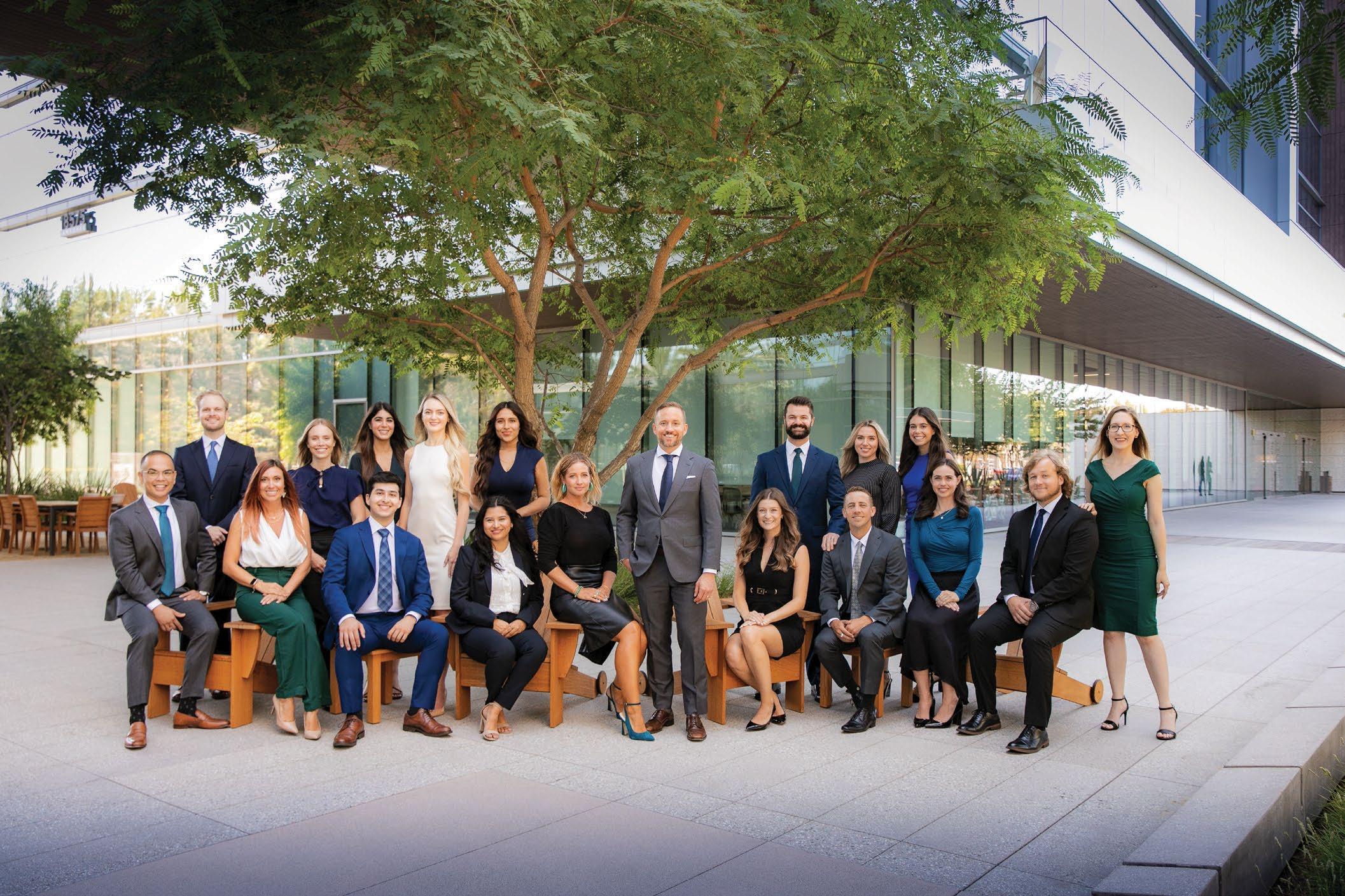
If you only do one thing to improve your attorney bio: fix the first sentence. Why? Because yours is long and boring. What makes an effective attorney bio? Someone reads it. Even better: someone reads it and decides to call you. But it won’t work if they give up before the first comma.
Tip 1: Fix the First Sentence
In most attorney bios, the first sentence should describe the problems you solve for clients in succinct, plain language.
Objection: I can’t reduce my practice to one sentence. Overruled.
If you are stuck, or if you have three or more sentences and can’t narrow it down, use my favorite writing tip: Tell it to a friend. Call a friend and tell them what you do. Better yet, tell someone in person. When talking to or looking at someone, we get cues if we are boring them. We get to the point and speak naturally.
This is the most important step. You can fix your first sentence, stop there, and trust that you have improved your bio. But for a deeper dive, keep reading.
Tip 2: Know Your Audience
This writing maxim has become cliché because it is essential: keep your audience in mind for everything you write. Your tone, word choice, and structure will be different for your bio than it would for a client update or for a legal brief.
When revising your bio, think about:
• Who do you want to read your bio? Prospects, clients, opposing counsel, potential colleagues?
• What question or problem or opportunity has led them to your website?
• Did someone refer them? If not, how did they find you?
• How can you potentially help them?
• Why should they trust you?
No One Is Reading Your Attorney Bio: Five Tips to Fix That
 by Julie Ackerman
by Julie Ackerman
Objection: My audience is not a monolith. Sustained.
It can be difficult to write for a faceless group of readers. Try picturing an actual person when writing—your best client, or your dream client—and write just for them.
Tip 3: Include Essential Elements
After thinking about who your audience is and how you can help them, keep both in mind while making sure to include the essential elements.
1. Your practice. Your crucial first sentence describes your practice in short and snappy prose. Take another sentence or two to elaborate if needed, but keep it short: less is more.
2. Relevant experience. Relevant is the most important word here. Describe one or two past experiences that are relevant to your current practice, briefly.
3. Representative matters. What matters have been most significant to you in your practice and why? Describe one or two, briefly.
4. Education. List your education and credentials. You don’t need to describe them in sentence form.
5. Something personal. Show readers that you’re human by including something about you: a hobby, a favorite book, a place you like to travel, the names of your children or pets.
Objection: I must remain professional at all times. Overruled.
You can remain professional while letting people get to know you.
Tip 4: Revise
All good writing is rewriting. Review and edit your new bio, then share it with someone from the marketing team or a colleague. Cut out anything extraneous. Be ruthless.
Attorney Journals San Diego | Volume 240, 2023 24
Objection: I don’t have time to think about my bio. Overruled.



Attorney bios are the most viewed pages on law firm websites. Don’t waste the opportunity! Make it easy for people to get to know you.

Tip 5: Use ChatGPT to Brainstorm
Objection: ChatGPT cannot produce a thoughtful attorney bio. Sustained.
As of now, ChatGPT and other generative A.I. platforms cannot write a bio you’d want to use.













However, they can give you a jump-start.
You could copy and paste your resume into ChatGPT and ask it to write an attorney bio. I tried this. Although the prose was terrible (sounded like a high schooler tossing around legalese), it gave me something to edit. Sometimes that’s all we need to get moving.
You could also ask A.I. a question.
I tried, “What elements should every litigator include in their bio?” and “What do people want to know before hiring an estate planning lawyer?”



In response to each question, A.I. generated a list. They weren’t complete, but they gave me some food for thought and helped put me in the shoes of someone looking for legal services, aka the audience.
Conclusion
I have yet to meet the person who enjoys updating their bio, but hopefully, these tools will guide you through a few simple steps that lead to great results.
Remember, even just fixing the first sentence is a huge leap forward. n
Julie Ackerman is a writer and a lawyer. Her extensive writing ranges from judicial opinions in homicide cases to published personal essays on the marital conflict of decluttering and blog posts analyzing the premises liability claim of Charlie Chaplin after slipping on a banana peel. Julie’s writing is informed by a wealth of practical experience: practicing immigration and employment law at Blank Rome, many years of producing her own creative writing, and teaching writing workshops to students of all ages. Learn more at www.legalisi.com.
• Websites • Presentations • Social Media • Email Marketing Writing, graphic design and marketing strategy for … • Branding • Press Releases • Print & Digital Ads • Business Cards • Newsletters • Blog Posts • Marketing Campaigns • Brochures, Flyers & More Women-Owned Business • 215-550-1435 • penn-creative.com We’ll Help Your Firm Get Noticed! Ad_AJ_Half_PennCreative.indd 1 9/20/23 12:31 PM
Attorney Journals San Diego | Volume 240, 2023 25
Unlocking the full potential of your employees is not just a lofty goal but a strategic necessity. When you invest in developing the strengths of your team members, you create a motivated, productive, and engaged workforce. You can cultivate a culture of growth and success within your organization by harnessing their unique abilities and empowering them to excel.
This blog post will explore ten effective ways to develop employee strengths and unleash their true potential. So let’s dive in and discover how you can transform your team into an unstoppable force!
Define the Role and Responsibilities of Each Team Member
Defining the role and responsibilities of each team member is a crucial first step in developing their strengths. By clearly outlining what is expected of them, you set the stage for success. Take the time to have individual conversations with each employee to understand their skills, expertise, and interests.
During these discussions, ask questions to gain insight into their aspirations and goals. This will help you align their strengths with tasks or projects that can challenge and motivate them. It’s important to remember that every employee has unique capabilities that can contribute to the team’s overall success.
Once you clearly understand each person’s strengths, it’s time to assign them tasks accordingly. Match employees with responsibilities that play to their areas of expertise and passion. This ensures optimal performance and boosts morale as individuals feel valued for their contributions.
Additionally, consider cross-training opportunities where employees can develop new skills by learning from one another. Encourage collaboration within teams so that individuals can leverage each other’s strengths while working towards common goals.
By defining roles and responsibilities thoughtfully, you create an environment where employees are more likely to thrive and succeed in utilizing their true potential. So take the time to assess your team members’ strengths today—it will be a game-changer for both productivity and job satisfaction!
10 Ways to Develop Employee Strengths
 by Noel Diem
by Noel Diem
Understand What Motivates Each Employee
Understanding what motivates each employee is crucial in developing their strengths. Every individual has unique drivers and desires that fuel their performance and engagement at work. By taking the time to understand these motivations, you can tailor your approach to bring out the best in each team member. One way to uncover what motivates employees is through open dialogue and feedback sessions. Ask them about their career goals, aspirations, and what they find fulfilling in their roles. It could be recognition, learning opportunities, or a sense of purpose that drives them.
Additionally, observing employee behavior can provide valuable insights into their motivations. Notice when they are most engaged and productive—is it when working on challenging projects or collaborating with others? Understanding these patterns will help you align tasks and assignments accordingly. Another effective method is regular check-ins with employees to gauge their satisfaction levels and address any concerns or challenges they may be facing. This shows that you value their input and are committed to supporting their growth.
Motivation can vary greatly among individuals, even within the same team. Taking a personalized approach will enhance job satisfaction and allow employees to leverage their strengths effectively for better productivity and success.
Delegate Tasks Based on Employees’ Strengths
One of the most effective ways to develop employee strengths is by delegating tasks aligning with their skills and abilities. When you assign responsibilities that tap into an employee’s strengths, it increases their job satisfaction and enhances their overall performance.
By understanding each team member’s unique capabilities, you can match them with tasks they are naturally inclined to excel. For instance, if you have a highly analytical and detailoriented employee, consider assigning them projects that require meticulous data analysis or problem-solving.
Attorney Journals San Diego | Volume 240, 2023 26
On the other hand, if you have a team member with excellent communication and interpersonal skills, delegate customerfacing roles or assignments involving collaborating with others.
Delegating tasks based on employees’ strengths boosts their productivity and promotes a sense of empowerment and confidence. When individuals are given opportunities to work on projects where they can showcase their talents, they feel valued and motivated to perform at their best.
Furthermore, it allows for skill development as employees refine and enhance their existing abilities. As they take on more challenging assignments in line with their strengths, they gain valuable experience and expertise in those areas.
In addition to benefiting individual employees, task delegation based on strengths also has positive outcomes for the entire team. By harnessing the collective power of everyone’s unique abilities and distributing workload accordingly, teams become more efficient and successful in achieving goals.
Moreover, this approach fosters collaboration among team members as they recognize each other’s strengths and rely upon one another for support when working together on complex projects or initiatives.
Delegating tasks based on employees’ strengths is a strategic way of developing your workforce while maximizing organizational efficiency. It empowers individuals to thrive in areas where they excel while promoting teamwork and enhancing overall performance.
Encourage Employees to Take on New Challenges
Encouraging employees to take on new challenges is crucial for their personal growth and the overall success of your team. When employees step out of their comfort zones, they can learn new skills, gain confidence, and contribute in ways they may not have thought possible.
One way to encourage this is by providing a supportive environment where employees feel safe taking risks. Let them know that mistakes are okay as long as they learn from them. By fostering a culture that values growth and learning, you create an atmosphere where trying new things is encouraged rather than feared.
Another way to motivate employees to take on new challenges is by setting clear goals and expectations. When employees understand what is expected of them and see how their efforts contribute to larger objectives, they are more likely to embrace growth opportunities.
Additionally, provide resources and support for employee development. This could include training programs, workshops, or mentorship opportunities. Investing in your employees’ professional development shows that you value their potential and are committed to helping them succeed.
Celebrate the successes that come from taking on new challenges. Recognize when an employee has achieved something significant or overcome a hurdle. Not only does
this boost morale, but it also encourages others within the team to follow suit.
By encouraging your employees to take on new challenges regularly, you foster a culture of continuous improvement and ensure that each individual can reach their full potential within your organization.
Provide Opportunities for Employees to Share Their Ideas
One of the most effective ways to develop employee strengths is by creating a culture that encourages and values employee input. Employees who feel like their ideas are heard and valued are more likely to be engaged and motivated in their work.
To provide opportunities for employees to share their ideas, start by setting up regular team meetings or brainstorming sessions where everyone can contribute. Create an open and non-judgmental environment where all ideas are welcomed.
Additionally, consider implementing suggestion boxes or online platforms where employees can anonymously submit their ideas. This allows even the shyest team members to participate without fear of judgment.
Another great way to encourage idea-sharing is through cross-functional projects or committees. By involving employees from different departments or levels in decisionmaking processes, you tap into diverse perspectives and increase collaboration within your organization.
Furthermore, ensure managers actively listen and show appreciation for employee suggestions. Acknowledge their contributions publicly whenever possible, as this boosts morale and encourages other team members to speak up.
Remember that fostering a culture of idea-sharing takes time and effort. It requires consistent communication channels, supportive leadership, and an environment that promotes trust among colleagues. But when done right, it can lead to innovation, increased job satisfaction, and overall growth for both individuals and the company.
Recognize and Reward Employees’ Successes
Recognizing and rewarding employees’ successes is crucial for their development and job satisfaction. Employees who feel valued and appreciated are more likely to be motivated and engaged in their work.
One way to recognize employees’ successes is through public acknowledgment. This can be done during team meetings or company-wide announcements where accomplishments are celebrated. By highlighting individuals’ achievements, you boost their confidence and inspire others to strive for excellence.
Another effective method is providing tangible rewards such as bonuses, gift cards, or extra time off. These incentives serve as a token of appreciation for a job well done and encourage employees to perform at their best.
Attorney Journals San Diego | Volume 240, 2023 27
Additionally, personalized recognition goes a long way in making employees feel special. Taking the time to privately acknowledge an employee’s success through a handwritten note or one-on-one conversation shows that you genuinely value their efforts.
Furthermore, creating opportunities for growth and advancement based on performance can also act as a reward for success. Offering promotions or new responsibilities allows employees to develop professionally while feeling recognized for their hard work.
Fostering a culture of celebration within the workplace promotes positivity and camaraderie among team members. Regularly celebrating milestones collectively creates an environment where everyone feels supported and encouraged.
Invest in Employee Development and Training
Investing in employee development and training is crucial for the growth and success of any organization. By providing opportunities for employees to enhance their skills and knowledge, companies can improve individual performance and foster a culture of continuous learning.
One way to invest in employee development is by offering professional training programs. These can range from technical workshops to leadership seminars, depending on the needs of each team member. Equipping employees with new tools and techniques can make them more efficient and effective in their roles.
Another avenue for investment is through mentorship programs. Pairing experienced employees with newer ones allows for valuable knowledge transfer and guidance. Mentoring relationships provide a supportive environment where individuals can learn from others’ experiences, gaining insights that may not be found in formal training settings.
Furthermore, organizations should encourage participation in industry conferences or webinars. Attending these events exposes employees to cutting-edge trends and best practices, enabling them to stay ahead of the curve within their respective fields.
Incorporating ongoing feedback into employee development plans helps identify areas for improvement while recognizing strengths. Regular check-ins between managers and team members facilitate open communication channels that allow for personalized growth strategies tailored to individual needs.
Create a Positive Work Environment
Creating a positive work environment is essential for developing employee strengths. Employees who feel supported and valued are more likely to excel in their roles. Here are some ways to foster positivity in the workplace.
Promote open and honest communication among team members. Encourage them to share their thoughts and ideas freely, creating an atmosphere of collaboration and respect. This will boost morale and allow individuals to contribute their unique perspectives.
Lead by example as a manager or team leader. Display kindness, patience, and empathy towards your employees. Show appreciation for their hard work and achievements regularly.
Next, provide opportunities for growth and development. Offer training programs or workshops to help employees enhance or learn new skills. This will not only benefit them but also contribute to the overall success of the organization.
Additionally, establish work-life balance initiatives such as flexible schedules or remote working options when possible. Prioritizing employee well-being promotes happiness and productivity within the team.
Furthermore, create a physical workspace that is comfortable and inviting. Consider factors like lighting, temperature control, ergonomic furniture, and designated spaces for relaxation or social interaction.
Lastly—ponder on this point: fostering positivity goes beyond just individual actions; it requires a collective effort from all team members! By nurturing an environment where everyone feels acknowledged and respected—regardless of role or hierarchy—you can cultivate a positive work culture that empowers employees to reach their full potential!
Remember: A positive work environment is crucial for unlocking employee strengths!
Encourage Open Communication Between Employees and Managers
Open communication between employees and managers is crucial for creating a positive work environment where everyone feels heard and valued. Open communication allows team members to freely express their ideas, concerns, and feedback without fear of judgment or reprisal.
One way to foster open communication is by holding regular team meetings or check-ins where everyone can share updates on their projects, ask questions, and provide input. This allows for collaboration and ensures that everyone is on the same page.
In addition to formal meetings, it’s crucial to create informal communication channels. This could include having an opendoor policy where employees feel comfortable approaching their manager with any issues or ideas. Managers should also make themselves available for one-on-one discussions so employees feel they have a safe space to discuss anything confidential or personal.
Another effective strategy is to utilize technology tools like project management software or instant messaging platforms that facilitate quick and efficient communication among team members. These tools can help break down barriers and encourage real-time collaboration regardless of physical location.
Managers should also actively listen to what their employees have to say without interrupting or dismissing their thoughts. By providing undivided attention during conversations, managers respect their employees’ opinions and demonstrate that they value what each person brings to the table.
Creating a culture of transparency within the organization can significantly contribute to open communication between employees and managers. When leadership consistently shares
Attorney Journals San Diego | Volume 240, 2023 28
information about company goals, strategies, and decisions with all team members, it fosters trust, encouraging more openness in discussions.
By promoting open lines of communication at all organizational levels—from hierarchical structures down to individual teams— companies create an atmosphere where diverse perspectives are welcomed, and innovation thrives. Open communication leads to stronger relationships between employees and managers while enhancing overall productivity in the workplace.
Analyze the Data
Analyzing the data is a crucial step in developing employee strengths within your organization. By carefully examining the performance metrics, feedback, and other relevant information, you can gain valuable insights into how well your strategies are working and identify areas for improvement.
Data analysis allows you to measure the impact of your efforts to develop employee strengths. It helps you assess whether employees are meeting their goals and objectives, as well as identify any patterns or trends that may indicate areas where further development is needed.
With this information in hand, you can make informed decisions about how to refine your approach and better align it with the needs and aspirations of your employees. Whether it’s adjusting training programs or redesigning job responsibilities, analyzing data empowers you to make strategic choices that will enhance each team member’s capabilities.

In addition to evaluating individual performance, data
analysis also provides a holistic view of overall team dynamics. It enables you to identify collaboration opportunities among employees who possess complementary strengths or skills while addressing any potential conflicts or gaps.
Remember that analyzing the data should not be a one-time activity but an ongoing process. Continuously monitoring and evaluating employee performance will help ensure that developmental initiatives remain effective over time.
Ready to Get Started?
Developing employee strengths is not only beneficial for individuals but also critical for organizational success. When each team member’s talents are nurtured and utilized effectively in alignment with company goals, productivity increases exponentially while creating an engaged workforce that drives innovation and growth!
So take action today! Embrace these ten approaches outlined above as part of your organizational culture—your employees will thank you (and so will your bottom line!). Remember: developing employee strengths isn’t just about building a better workforce; it’s about building a better future for your organization n
Noel Diem is an experienced Content Marketing Manager, I have developed a deep understanding of creating and executing successful content strategies that drive engagement, fill sales pipelines, and deliver results. I am passionate about creating compelling content that resonates with audiences and drives business goals while remaining true to brand voice. Learn more at www.mitratech.com.

Attorney Journals San Diego | Volume 240, 2023 29


San Diego’s Leading Plaintiffs Trial Firm Serious Personal Injury Wrongful Death Sexual Abuse and Assaults 755 Front Street | San Diego, CA 92101 | GetGomez.com 833-Get-Gomez | 619.237.3490 Employment law Mass Torts Generous Referral Fees Paid Consistent With The Rules of Professional Conduct We are leaders because we • Try more cases than any other San Diego firm; • Win more than any other San Diego firm; • Have recovered more than 1 billion dollars in verdicts and settlements; • Have recovered more than 150 individual verdicts or settlements over one million dollars each; • Are California’s most gender diverse large plaintiffs law firm; and • Are the largest Latino founded consumer rights law firm in the Country. Don’t just take our word for it. Ask around.

WWW.PSBLAW.COM 310.477.1700 1.877.800.1700 UNRIVALED JURY VERDICT S SE TTL E MENT S PE RS ONA L SE RVIC E R EFE RRA L F EE S PANISH SHEA & BOYLE is happy to discuss how we may assist you in your case. Please contact the Honorable Judge Peter Polos (Ret.) for more information at polos@psblaw.com PRSRT STD U.S. POSTAGE PAID PERMIT # 100 CLAREMONT, CA










































 Monty A. McIntyre, Esq. Mediator, Arbitrator & Referee ADR Services, Inc.
Monty A. McIntyre, Esq. Mediator, Arbitrator & Referee ADR Services, Inc.

 by Wayne Pollock
by Wayne Pollock





































 by Mark Medice
by Mark Medice


 by Julie Ackerman
by Julie Ackerman












 by Noel Diem
by Noel Diem




